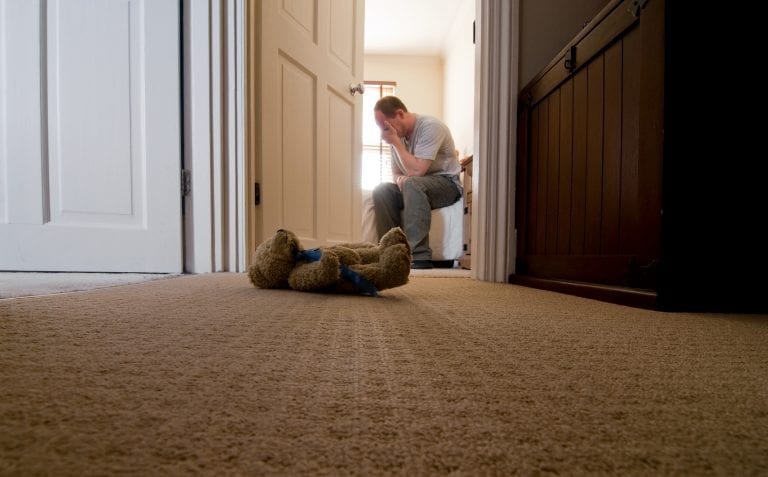Parents who lose their infants are at particular risk for prolonged grief disorder (PGD); here’s what you can do if you’re still grieving the loss of a child.
For every parent, the loss of a child is a traumatic event. But for some people, the grief is especially severe and they experience what is known as Prolonged Grief Disorder (PGD). Recently, Dr. Rick Goldstein of Boston Children’s Hospital led a study to better understand PGD, the symptoms and warning signs, and how healthcare providers can help.
When Infant Death is Sudden
Mothers in particular are at risk for PGD, which can be caused by sudden death and the fact that they weren’t prepared for it. Since Sudden Infant Death Syndrome (SIDS) and other sleep-related infant deaths fall into this category, mothers who have experienced this type of loss were the focus of Dr. Goldstein’s study.
SIDS is the leading cause is of more than 3,500 infant deaths in the US every year when combined with other sleep-related infant deaths such as accidental suffocation. SIDS is the sudden death of a baby age 1 month to 1-year-old.
Grief is a normal response to the death of a loved one or close friend, and affects how we think and feel. But people who suffer from PGD have such an enduring grief that it goes beyond what most of us experience, even to the point of disrupting daily living.
Effects of Prolonged Grief Disorder
When PGD affects the health and quality of life of a mother, it may also influence the lives of the other children in her family, and change the way she bonds with her subsequent babies. PGD is different to depression or post-traumatic stress disorder (PTSD), which is why if you suspect you’re experiencing PGD, it’s critical that you discuss the differences in how you’re feeling with your healthcare provider so that you get the treatment that you need.
5 Stages of Grief
In the 5-stage Kubler-Ross Grief Cycle [denial, anger, bargaining, depression, acceptance], Dr. Goldstein found that moms experiencing PGD don’t move into the final stage: acceptance.
In fact, women in the study shared that the acceptance stage doesn’t take into account their challenges as mothers who are responsible for maintaining memories and a sense of value around their deceased child’s life. They shared the difficulties they face over time, as their deceased infant is less remembered or considered, and how that contributes to their anger and their inability to embrace acceptance.
Bereaved parents in the study described how difficult it is to discuss their experiences of loss and to ask for help in grief support, something that is further burdened by the stigma of blame that surrounds many SIDS and sleep-related infant deaths.
If you’ve lost an infant and are still grieving, this new research shows that it’s not unusual for you to need bereavement support for months—even years—after a sudden infant death. Every day at First Candle, a non-profit dedicated to reducing SIDS, the staff receives calls from parents who are struggling with paralyzing grief. For many of them, their families, friends and colleagues simply can’t understand the level of despair they live with for months and even years. Dr. Goldstein’s study shows us that the grief a mother experiences after the death of her baby is unlike any other.
Pangs of Grief
Although, as Dr. Goldstein describes in his study, ‘pangs of grief’ are not in themselves a mental disorder, they are a key feature of what’s known as pathological grief, and the realization that moms can experience such deep and lasting distress suggests how important the bond of attachment can be between mothers and their deceased babies.
This helps explain why PGD can have such an impact on a woman’s bonding experience in the pregnancies that come after her loss, and on her parenting of other children.
If you think that you or someone you know is suffering from PGD, consider these actions:
- Share your feelings with friends and family
- Talk to your healthcare provider
- Get involved with a bereavement support group
- Seek help from a professional therapist specializing in grief disorders
What Grief Looks Like
Grief typically includes anger, avoidance, a sense of meaninglessness, shock and numbness, but PGD symptoms are longer-lasting and include:
- Significant emotional pain and yearning longer than 6 months after a loss
- Physical health issues
- Role confusion—they’re not sure if they’re still considered a mom
- Diminished sense of self
- Anger or bitterness
- Inability to trust people






Comments are closed.